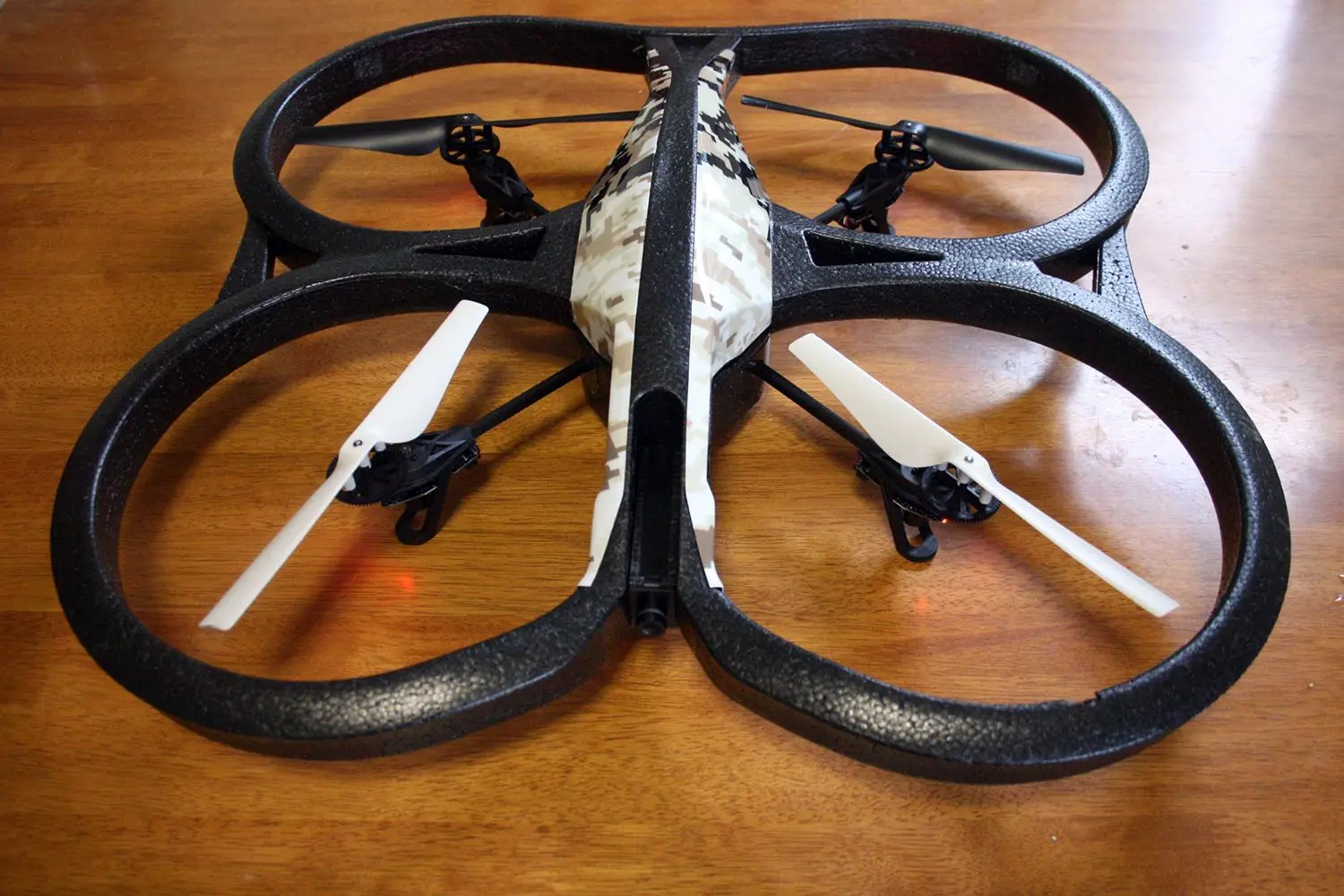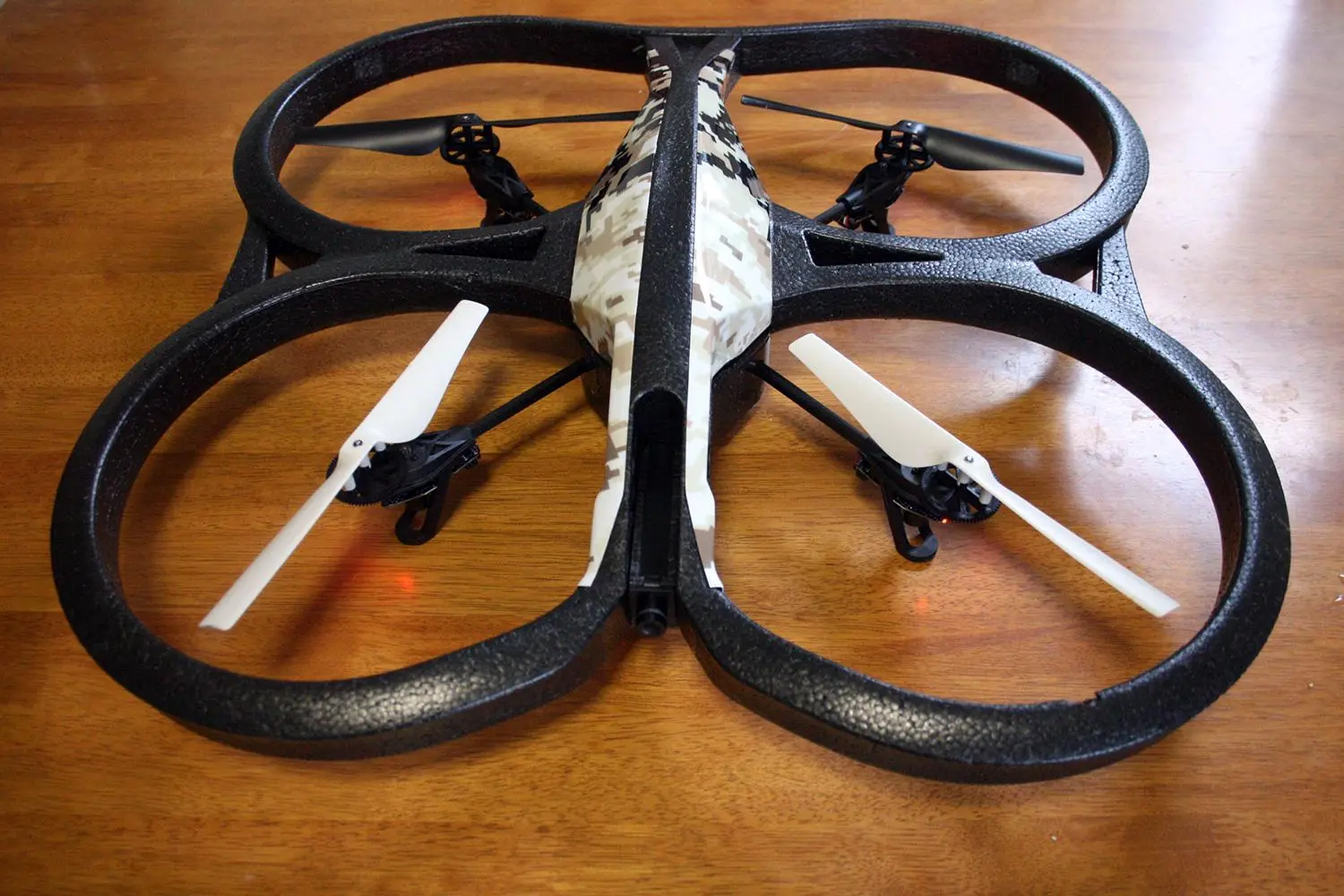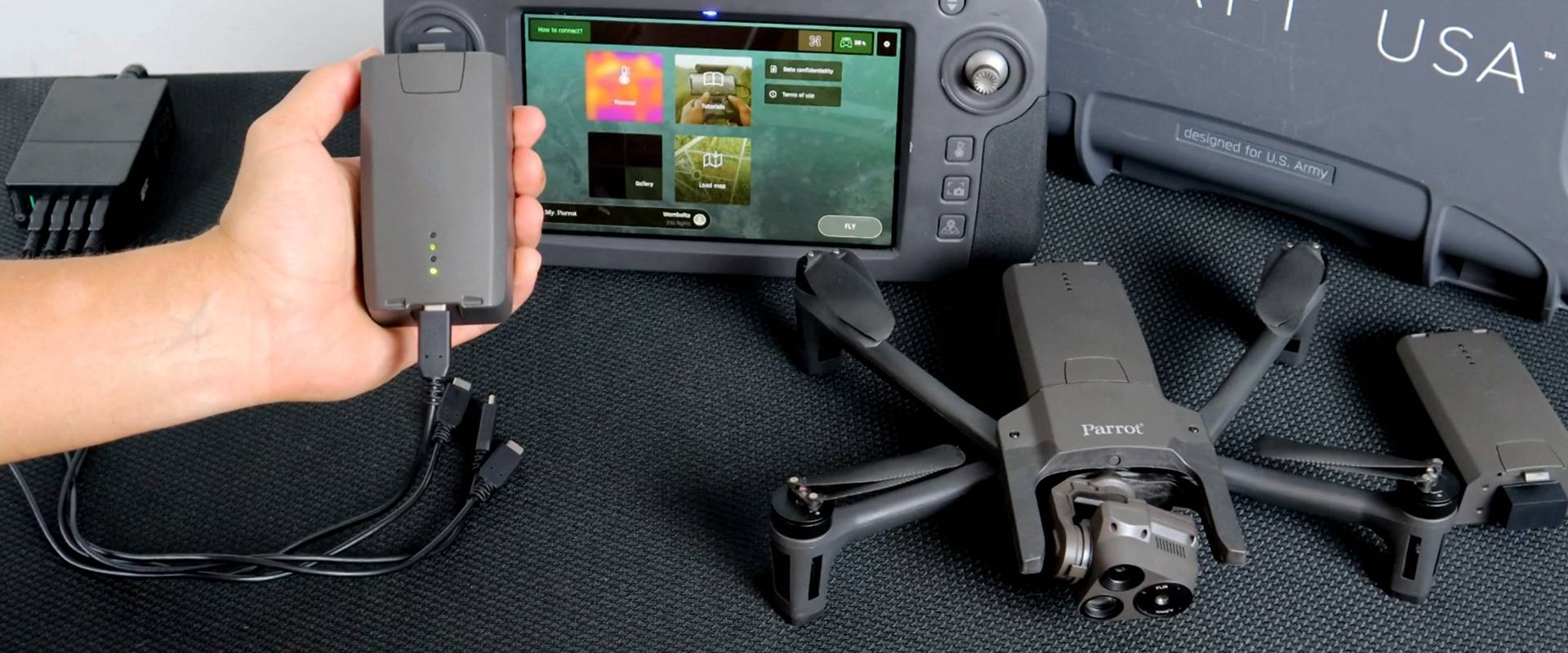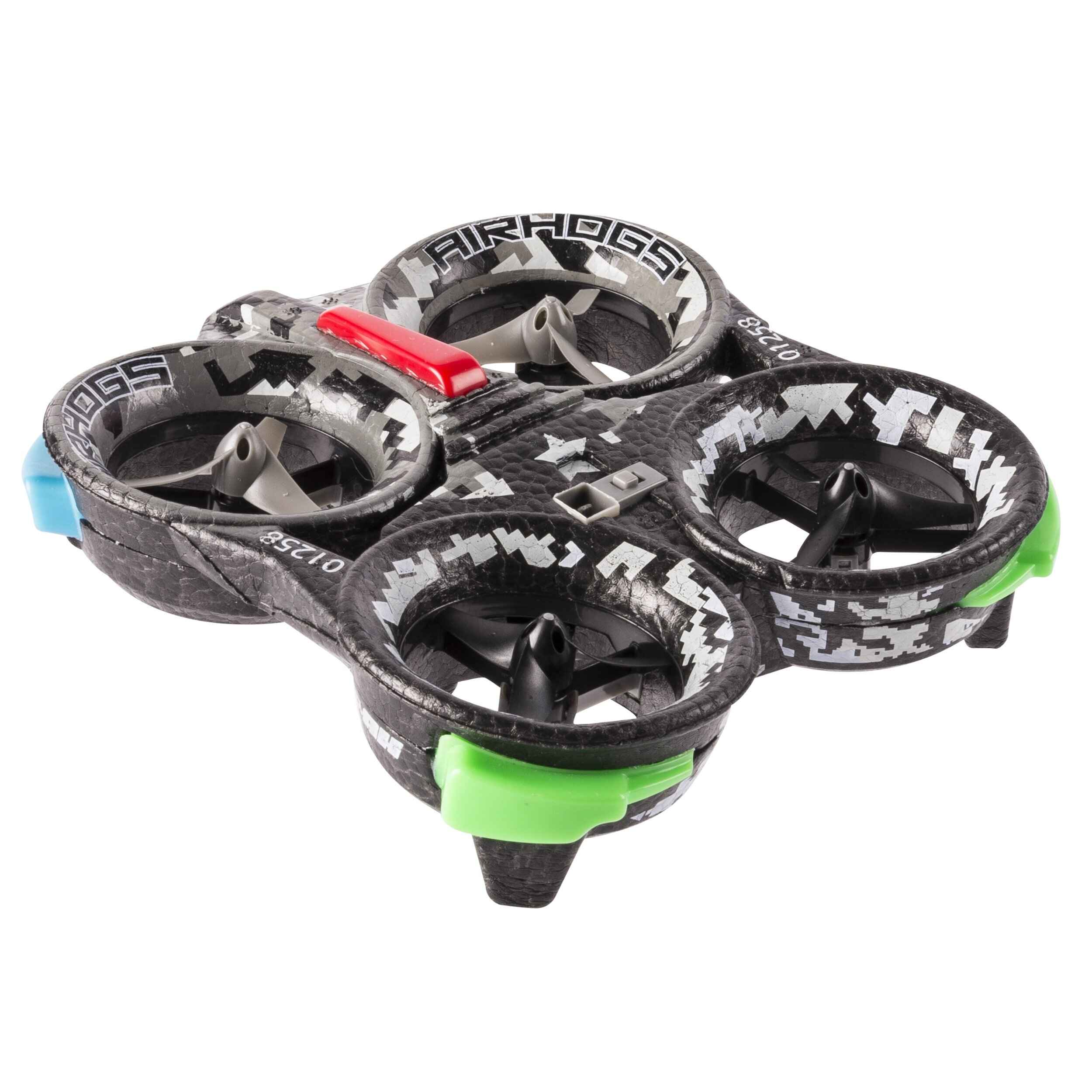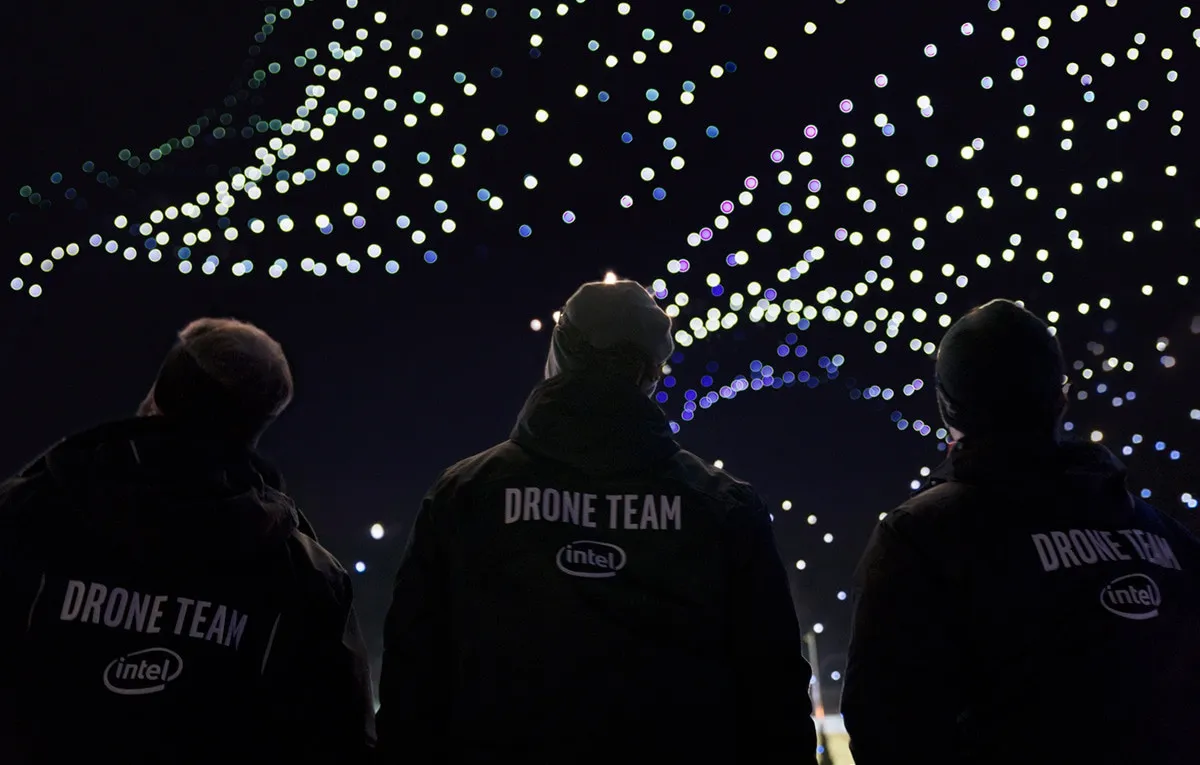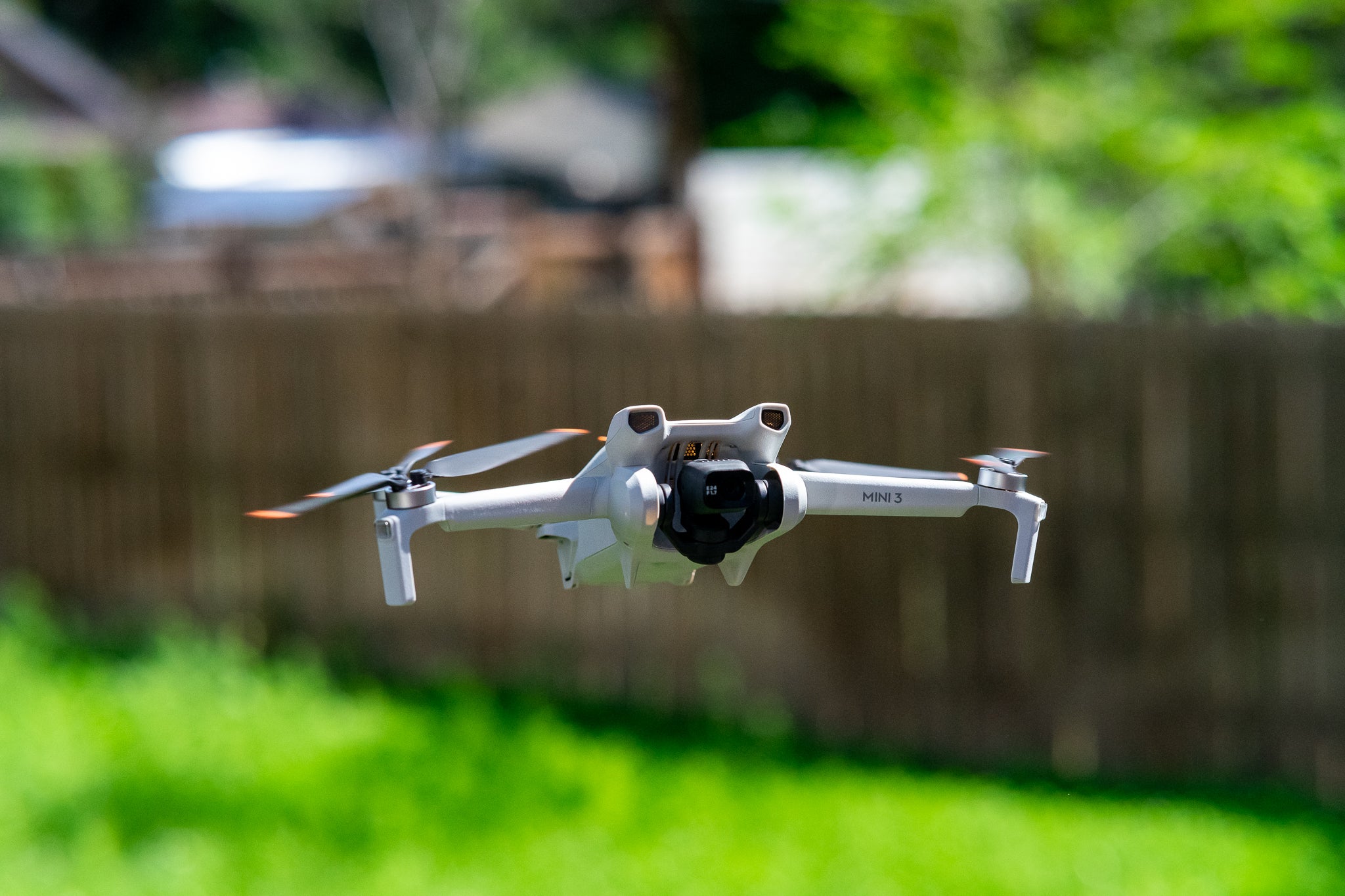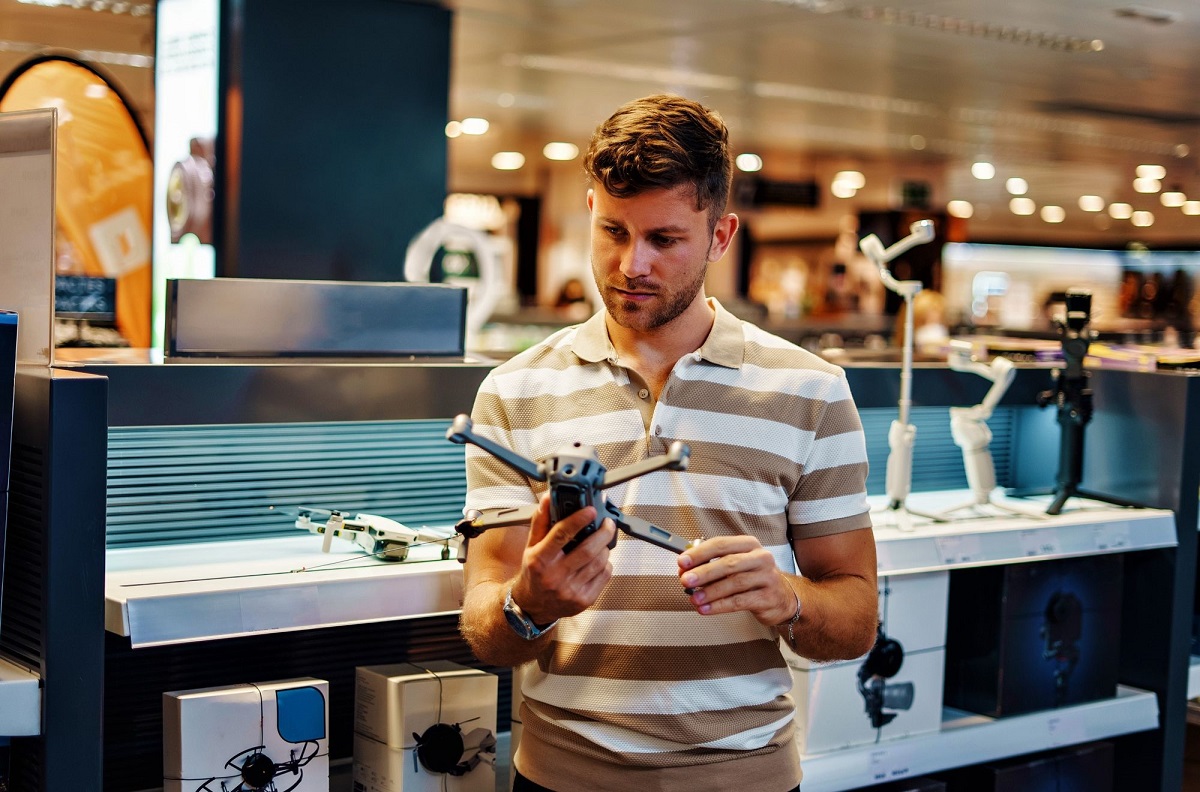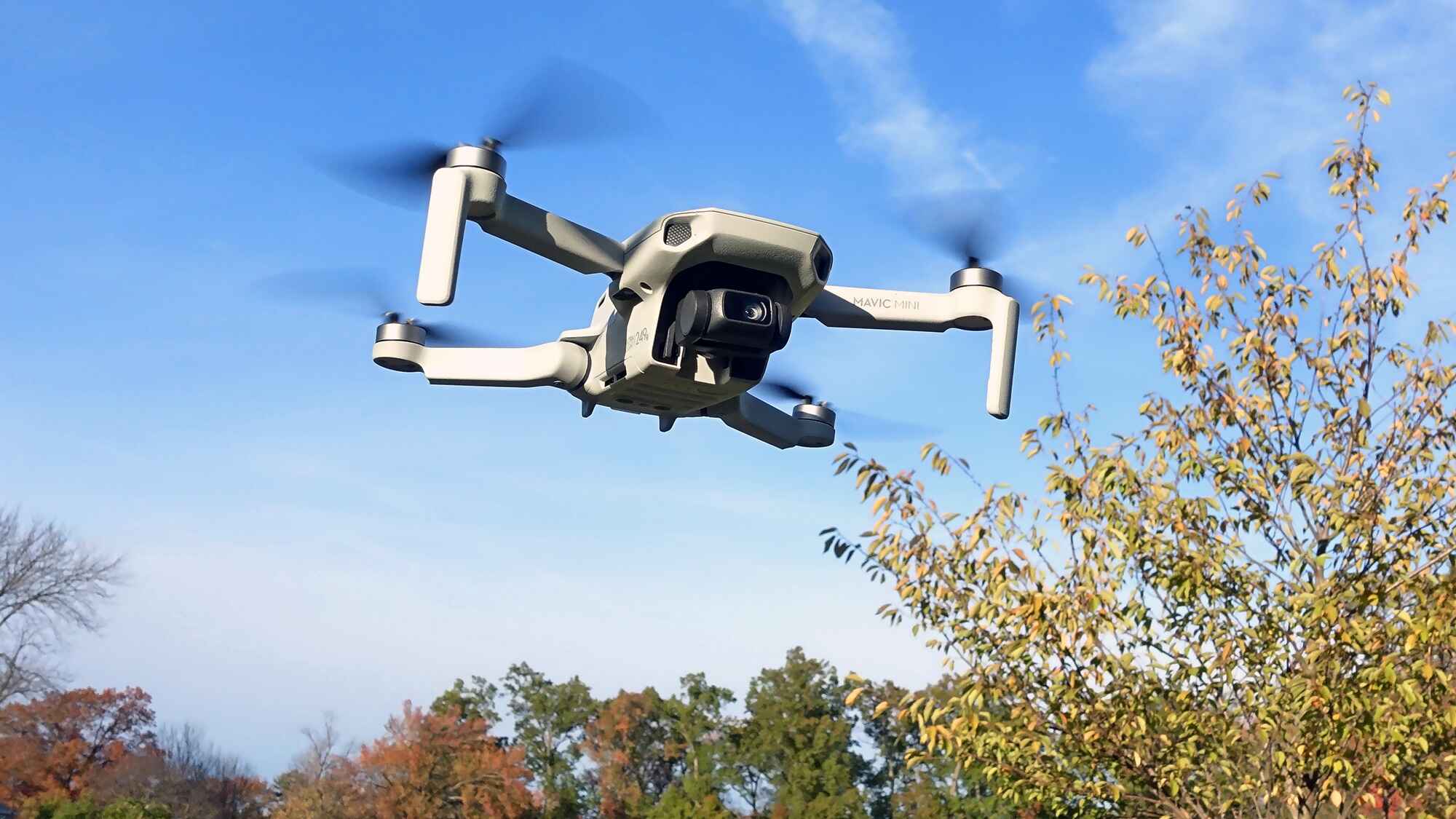Introduction
Welcome to the exciting world of AR drones! Whether you are a tech enthusiast, a hobbyist, or a professional in the field, you have come to the right place to learn all about these innovative devices. AR drones, or Augmented Reality drones, have revolutionized the way we experience remote-controlled flying devices.
With their advanced technologies and unique features, AR drones offer an unparalleled level of control, immersion, and excitement. They combine the thrill of remote-controlled flight with augmented reality capabilities, allowing users to experience a whole new dimension of interactive and immersive entertainment.
In this article, we will explore what exactly AR drones are, how they work, the different types available, their benefits, and the various applications they have. Whether you’re considering purchasing an AR drone, interested in the technology behind them, or simply curious about this emerging field, we’ve got you covered.
So, fasten your seatbelts and get ready to take off into the world of AR drones, where fantasy meets reality and exhilaration awaits!
What Is an AR Drone?
An AR drone, short for Augmented Reality drone, is a remotely controlled quadcopter or multirotor aircraft that combines the thrill of flying with interactive augmented reality technology. These drones are equipped with advanced sensors, GPS, cameras, and other electronics that allow for precise control and immersive experiences.
Unlike traditional drones that are solely used for aerial photography or videography, AR drones take the experience to a whole new level by overlaying virtual elements onto the real world. This is made possible through the use of augmented reality technology, which enhances the pilot’s view by displaying virtual objects, graphics, or information on a connected device, such as a smartphone or tablet.
AR drones offer a wide range of features and functionalities, which vary depending on the model and brand. Some common features include obstacle avoidance systems, automated flight modes, high-resolution cameras, real-time video streaming, and even autonomous flight capabilities.
These drones are designed to be user-friendly, making them accessible to both beginners and experienced pilots. They often come with intuitive mobile apps or dedicated remote controllers that allow users to control the drone’s movements, capture stunning aerial footage, and interact with virtual objects.
Thanks to their augmented reality capabilities, AR drones can be used for a variety of purposes beyond recreational flying. They have found applications in fields such as gaming, education, industrial inspections, search and rescue operations, and even artistic performances.
Overall, AR drones offer a unique and captivating experience that combines the thrill of flying with the interactive and immersive capabilities of augmented reality. Whether you’re a hobbyist looking to explore new horizons or a professional seeking to unlock the creative and practical potential of drones, an AR drone is a fascinating device to consider.
The Components of an AR Drone
An AR drone consists of various components that work together to enable its flight and augmented reality capabilities. Understanding these components is essential for pilots and enthusiasts to have a deeper appreciation of how these drones operate. Let’s explore the key components of an AR drone:
- Frame: The frame of an AR drone serves as the structure that holds all the components together. It is typically made of lightweight yet durable materials such as carbon fiber or plastic. The design of the frame determines the drone’s stability, maneuverability, and overall performance.
- Flight Controller: The flight controller is the brain of the drone, responsible for processing input from the pilot and onboard sensors to control the drone’s movements. It uses algorithms and feedback loops to maintain stability, adjust motor speed, and respond to user commands.
- Propellers: AR drones are equipped with multiple propellers, usually four or more, arranged in a symmetric pattern. These propellers generate the lift and thrust needed for the drone to take off and maneuver in the air.
- Electric Motors: Electric motors are connected to the propellers and provide the necessary power to spin them at high speeds. These motors are typically brushless, offering efficiency, durability, and precise control over the drone’s movements.
- Battery: AR drones are powered by rechargeable lithium-polymer (LiPo) batteries. The battery provides the energy required to operate the motor, flight controller, and other electronics onboard. The size and capacity of the battery affect the drone’s flight time.
- Sensors: AR drones are equipped with various sensors that provide crucial data for flight control and augmented reality functionalities. These sensors include accelerometers, gyroscopes, magnetometers, barometers, and GPS receivers. They help the drone maintain stability, determine its position, and gather information about the environment.
- Camera: The camera is an essential component of an AR drone as it captures real-time video or images for the purposes of augmented reality and aerial photography. Depending on the drone model, the camera can range from basic to high-resolution and may even offer features like image stabilization or live streaming capabilities.
- Wi-Fi or Transmitter: AR drones are often equipped with wireless connectivity, allowing them to communicate with a connected device such as a smartphone or tablet. Users can control the drone, access flight data, and receive live video feeds through a dedicated mobile app or controller.
These components work together seamlessly to enable the flight and augmented reality capabilities of an AR drone. Whether you’re a pilot or an enthusiast, understanding these components allows for a deeper appreciation of the technology and the endless possibilities these drones offer.
How Does an AR Drone Work?
An AR drone may seem like a complex flying machine, but its operation can be broken down into key principles that govern its flight and augmented reality capabilities. Let’s dive into how an AR drone works:
1. Flight Control: The flight control system is responsible for stabilizing and maneuvering the drone in the air. It receives input from the pilot, along with data from onboard sensors, and adjusts the motor speeds accordingly. This enables the drone to maintain balance and perform desired movements such as ascending, descending, rotating, or hovering.
2. Navigation and Positioning: AR drones often come equipped with GPS or other navigation systems that allow them to determine their position in real time. This helps the drone to maintain a stable flight and execute programmed flight paths or follow waypoints. Precise positioning is crucial for augmented reality applications, as it ensures accurate overlay of virtual objects onto the real world.
3. Augmented Reality: The augmented reality capabilities of an AR drone involve overlaying digital elements onto the pilot’s view of the real world. This is accomplished by utilizing the onboard camera and sensors to capture the live video feed and analyze the surroundings. Augmented reality software then processes this data and adds virtual objects, graphics, or information onto the display of a connected device, such as a smartphone or tablet.
4. Mobile App or Controller: Pilots can control an AR drone using a dedicated mobile app or a physical controller. The app or controller establishes a wireless connection with the drone, allowing users to send commands, adjust flight settings, and access various features. Some apps also provide augmented reality interfaces that display flight data, live video feeds, and virtual elements.
5. Real-Time Video Feed: The drone’s onboard camera captures real-time video, which can be transmitted to the connected device. This live video feed allows the pilot to experience the flight from a first-person perspective, aiding in navigation and providing an immersive view of the augmented reality elements.
6. Safety Measures: AR drones often incorporate safety features to prevent accidents and protect both the drone and its surroundings. These may include obstacle avoidance systems, emergency landing capabilities, and geo-fencing, which restricts the drone from flying into restricted areas or beyond a predetermined range.
By combining these elements, an AR drone creates a captivating and interactive flying experience. Whether it’s exploring virtual worlds, engaging in aerial races, or capturing stunning augmented reality videos, the technology behind AR drones offers endless possibilities for entertainment and creativity.
The Types of AR Drones
AR drones come in various types, each designed for different purposes and catering to different user needs. Let’s explore some of the most common types of AR drones available in the market:
- Recreational Drones: These drones are built for hobbyists and recreational users who are looking for a fun and engaging flying experience. They usually offer a good balance between affordability, ease of use, and features. Recreational AR drones often come with augmented reality gaming capabilities, allowing users to engage in interactive and immersive experiences.
- Professional Drones: Professional-grade AR drones are more geared towards advanced users, such as filmmakers, photographers, surveyors, and industrial inspectors. They are equipped with high-resolution cameras, advanced stabilization systems, and additional features that allow for precise aerial photography, videography, and data collection. These drones offer enhanced control and customization options to meet the demanding requirements of professional applications.
- FPV Racing Drones: First-Person-View (FPV) racing drones are specifically designed for high-speed racing competitions. These drones incorporate augmented reality elements to enhance the racing experience, such as virtual racing tracks, obstacles, and real-time telemetry data. They are typically lightweight, agile, and equipped with advanced flight modes to handle the demands of racing at high speeds.
- Educational Drones: Educational AR drones are designed to support learning and promote STEM education. They often come with programming interfaces and educational modules that introduce users to coding, robotics, and drone technology. These drones allow students and educators to experiment, learn about real-time data analysis, and explore the intersection of augmented reality and education.
- Industrial Drones: Industrial AR drones are specifically designed to meet the needs of various industries, such as construction, agriculture, energy, and infrastructure inspection. They are equipped with specialized sensors, thermal imaging cameras, and advanced mapping capabilities to perform tasks such as aerial inspections, site monitoring, crop analysis, and infrastructure assessment. These drones are built to withstand harsh conditions and are often integrated with software for data analysis and reporting.
- Customizable Drones: Some AR drones offer users the flexibility to customize and add specific components or functionalities to suit their specific needs. These drones often have modular designs, allowing users to swap out cameras, sensors or even add on extra payloads as per their requirements.
As technology advances, new types of AR drones continue to emerge, offering exciting features and applications. Whether you’re a recreational flyer, a professional in need of aerial capabilities, or involved in a specialized industry, there’s likely an AR drone that fits your specific needs.
The Benefits of Using an AR Drone
Using an AR drone offers a range of benefits and advantages for enthusiasts, professionals, and industries alike. Let’s explore some of the key benefits of incorporating an AR drone into your activities:
- Immersive Experience: One of the main advantages of using an AR drone is the immersive experience it provides. By combining the real world with virtual elements, AR drones offer a unique and captivating flying experience that engages the senses and sparks creativity.
- Augmented Reality Capabilities: AR drones allow users to experience augmented reality, where virtual objects and graphics are superimposed onto the real world. This opens up exciting possibilities for gaming, interactive storytelling, virtual tours, and more.
- Stunning Aerial Photography and Videography: With high-quality cameras and stable flight controls, AR drones enable users to capture breathtaking aerial photos and videos. Whether it’s for personal use or professional applications, aerial photography and videography offer a unique perspective and a wide range of creative possibilities.
- Enhanced Safety and Precision: AR drones are equipped with advanced sensors and flight control systems that enhance safety and precision. Features such as obstacle avoidance and automated flight modes minimize the risk of accidents and allow for more controlled and accurate flights.
- Accessibility and Ease of Use: AR drones are designed to be accessible to users of all skill levels. With intuitive mobile apps and user-friendly controls, beginners can quickly learn to fly an AR drone, while advanced users can unlock more features and functionalities to suit their specific needs.
- Versatility and Customizability: AR drones offer versatility and customizability, allowing users to adapt the drone for their desired applications. Whether it’s swapping out cameras, adding extra components, or adjusting flight settings, the ability to customize an AR drone allows it to be tailored to specific requirements.
- Educational and Learning Opportunities: AR drones provide valuable educational opportunities, particularly in the fields of science, technology, engineering, and mathematics (STEM). By incorporating coding, programming interfaces, and real-time data analysis, AR drones can help foster a deeper understanding of concepts and engage students in hands-on learning.
- Industrial Applications: In various industries such as construction, agriculture, and infrastructure inspection, AR drones have proven to be useful tools for aerial inspections, site monitoring, and data collection. They offer cost-effective and efficient solutions, reducing the need for manual labor and enabling professionals to gather valuable data from challenging or hard-to-reach locations.
Overall, the use of an AR drone opens up a world of possibilities and benefits. From entertainment and creativity to professional applications and educational opportunities, AR drones are transforming the way we interact with technology and the world around us.
Applications of AR Drones
The versatility and capabilities of AR drones have led to a wide range of applications across various industries and fields. Let’s explore some of the key applications of AR drones:
- Aerial Photography and Videography: One of the most popular applications of AR drones is in aerial photography and videography. The ability to capture stunning aerial shots and videos offers new perspectives for filmmakers, photographers, and content creators. AR drones equipped with high-resolution cameras, stabilizers, and real-time video streaming capabilities have revolutionized the way aerial shots are captured.
- Mapping and Surveying: AR drones are used for mapping and surveying applications, providing a cost-effective and efficient way to gather data about large areas of land or structures. Drones equipped with specialized sensors, such as LiDAR or thermal cameras, can collect precise spatial data that can be used for topographic mapping, 3D modeling, land surveying, and monitoring environmental changes.
- Search and Rescue Operations: AR drones have proven to be valuable tools in search and rescue operations. Equipped with thermal imaging cameras, they can quickly cover large areas and locate missing individuals or identify areas of concern. The real-time video streaming capabilities of AR drones also aid in coordination and decision-making during emergency situations.
- Infrastructure Inspection: AR drones are used for inspecting infrastructure such as bridges, power lines, and buildings. Their ability to access difficult-to-reach locations and capture high-resolution imagery allows inspectors to identify potential issues, monitor structural integrity, and assess damage more efficiently and safely.
- Environmental Monitoring: AR drones assist in environmental monitoring by collecting data on natural resources, wildlife populations, and habitat changes. Drones equipped with sensors can monitor vegetation health, detect oil spills, measure air quality, and assist in wildlife conservation efforts. These applications help understand environmental changes, enable faster response to emergencies, and contribute to sustainable resource management.
- Agriculture: AR drones are employed in the agricultural sector for crop monitoring and management. By capturing aerial imagery and utilizing data analysis software, farmers can identify crop stress, monitor irrigation needs, detect disease outbreaks, and optimize resource usage. This aids in precision agriculture, leading to increased efficiency, reduced costs, and improved crop yield.
- Entertainment and Gaming: AR drones have transformed the gaming and entertainment industry by adding a new dimension of interaction and immersion. Gaming applications allow users to engage in augmented reality experiences, such as racing, treasure hunts, or virtual battles, enhancing the excitement and interactivity of traditional games.
- Education and STEM Learning: AR drones are utilized in educational settings to teach concepts in science, technology, engineering, and mathematics (STEM). By incorporating coding, programming interfaces, and real-world application, students can learn about robotics, aerodynamics, navigation, and data analysis in a hands-on and engaging way.
These are just a few examples of the wide range of applications for AR drones. As technology continues to advance, and new features are introduced, the potential for using AR drones across different industries and fields will only continue to expand.
FAQs About AR Drones
As the popularity of AR drones continues to grow, it’s natural to have questions and seek clarification about these innovative flying machines. Here are some frequently asked questions about AR drones:
-
- Q: Are AR drones difficult to fly?
A: AR drones are designed with user-friendliness in mind, making them accessible to both beginners and experienced pilots. Most AR drones come with intuitive controls, automated flight modes, and stability features that make the flying experience smooth and easy to handle.
-
- Q: Are AR drones legal to fly?
A: The legality of flying AR drones varies depending on the country and local regulations. It is important to familiarize yourself with the specific rules and regulations in your area before flying an AR drone. Generally, common rules include flying within line of sight, avoiding restricted airspace, and respecting privacy laws.
-
- Q: How long can an AR drone fly?
A: The flight time of an AR drone depends on several factors, including the model, battery capacity, and flight conditions. On average, most AR drones can fly for around 10 to 30 minutes on a single battery charge. It’s recommended to have extra batteries on hand to extend flight time.
-
- Q: Can I fly an AR drone indoors?
A: Yes, many AR drones can be flown indoors. However, it’s important to consider the size of the space, obstacles, and safety precautions. Some AR drones offer indoor flight mode, with reduced speed and obstacle avoidance systems to enhance safety in confined spaces.
-
- Q: Can AR drones be flown in windy conditions?
A: AR drones are generally designed to handle mild to moderate wind conditions. However, it’s recommended to avoid flying in strong winds as it can affect stability and control. Always check the weather conditions and follow the manufacturer’s recommendations for flying in windy weather.
-
- Q: What safety measures should I take when flying an AR drone?
A: Safety is crucial when flying an AR drone. Some basic safety measures include keeping the drone within line of sight, avoiding flying near people, animals, or sensitive areas, and performing regular maintenance checks on the drone. Additionally, it’s important to follow local regulations and respect others’ privacy.
-
- Q: Can I add extra features or upgrade my AR drone?
A: Depending on the model, some AR drones offer the ability to add extra features or upgrade components. These can include additional cameras, obstacle avoidance systems, or even payload capabilities for specific applications. Always check with the manufacturer for compatible upgrades and modifications.
-
- Q: Can I use my smartphone or tablet as a controller for an AR drone?
A: Yes, many AR drones have dedicated mobile apps that can turn your smartphone or tablet into a controller. These apps provide a user-friendly interface and allow access to various flight settings, live video feeds, and augmented reality features.
These are just a few common FAQs about AR drones. It’s important to refer to the manufacturer’s guidelines and seek further information specific to your drone model for a comprehensive understanding of its features, capabilities, and operating procedures.
Conclusion
AR drones have revolutionized the way we experience remote-controlled flying devices, combining the thrill of flight with immersive augmented reality capabilities. These innovative devices have found applications in various fields, from entertainment and photography to industrial inspections and education.
Throughout this article, we have explored the different aspects of AR drones, including what they are, how they work, the components that make them function, the various types available, their benefits, and the applications they serve.
AR drones offer a unique and captivating flying experience, allowing users to explore new dimensions of interactive entertainment. With features like augmented reality overlays, high-resolution cameras, and stable flight controls, AR drones provide breathtaking aerial photography and videography capabilities.
Moreover, AR drones have expanded their reach into industries such as mapping, surveying, search and rescue operations, infrastructure inspection, environmental monitoring, and agriculture. They have proven to be invaluable tools in these fields, offering cost-effective and efficient solutions to gather data, monitor areas, and perform complex tasks.
For enthusiasts and hobbyists, AR drones provide a new level of excitement and engagement, while educational institutions incorporate them to enhance STEM learning and promote hands-on experience. These drones stimulate creativity, introduce programming and coding concepts, and teach real-world applications of science and technology.
However, it’s important to note that flying AR drones comes with responsibilities. Adhering to local regulations, prioritizing safety measures, respecting privacy, and remaining aware of your surroundings are crucial aspects of being a responsible drone pilot.
As technology continues to advance, we can expect further advancements in AR drone capabilities, opening up even more possibilities for their use. Whether for recreational purposes, professional applications, or educational endeavors, AR drones have undoubtedly made a lasting impact on how we interact with the world from the skies.







